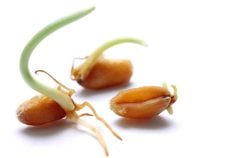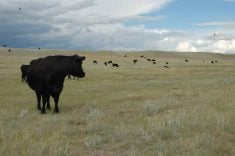White-tailed deer farmers in Alberta and Saskatchewan are sitting on a goldmine, industry analysts say. Growth doubled last year and is expected to keep rising.
Marshall Patterson, an alternative livestock development analyst in Saskatchewan, forecasts white-tailed deer farming could grow at a rate of 100 percent per year for the next five years.
The industry is in the infant stages in Saskatchewan, where farmers weren’t allowed to raise alternative livestock like elk, bison and deer until 1987. White-tailed deer farms are still prohibited in Manitoba and British Columbia.
Read Also

Manitoba community projects get support from HyLife
HyLife Fun Days 2025 donated $35,000 each to recreation and housing projects in Killarney, Steinach and Neepawa earlier this fall.
The industry took off in Alberta in 1991. Now, there are about 2,500 white-tailed and mule deer raised in Alberta by more than 90 producers, according to livestock diversification officer Chuck Huedepohl, compared to about 30 producers raising close to 1,000 deer in Saskatchewan.
Both Huedepohl and Patterson agree there aren’t enough deer to meet a growing demand.
“The major restrictive factor here is not interest,” Patterson said, “but the availability of deer.”
The majority of white-tails raised in Saskatchewan and Alberta are sold for breeding in an attempt to increase stocks. But there is a growing demand in Asia for venison and antler velvet, used for medicinal purposes and as an aphrodisiac in some cultures.
White-tailed and mule deer entice producers because the animals usually give birth to twins or triplets, the deer need little maintenance and can be raised on as little as 40 acres of land.
If the industry continues to grow at the current rate and evolves into a venison market, Huedepohl said some producers predict there could be as many as 100,000 white-tailed deer raised on farms in Alberta by 2004. A white-tailed doe can fetch up to $9,000 today, up from around $4,500 two years ago, Huedepohl said.
There is also potential for people interested in operating hunt farms. But deer ranchers, which operate under provincial game farming regulations, should try to lure hunters to Canada rather than ship their bucks to hunting ranches in the United States, said Patterson.
“There are literally thousands and thousands of hunters in the United States who think nothing of hunting behind a fence and white-tailed deer are the most sought after big game in North America,” he said.
Bentley Brown calls Saskatchewan white-tails the “Cadillac” of all animals, especially to hunters.
The Turtleford, Sask. outfitter and game farmer runs one of only two hunt farms in the province.
Brown said his clients are mainly Texans and Europeans wanting to add the Saskatchewan white-tailed deer to their trophy collections. And poor health or a handicap prevent many people from going on a hunt in the wild.
If producers could supply the deer, Brown said there would be no shortage of clients for domestic hunt farms.
Quebec is the only province competing with Saskatchewan for business from non-resident hunters.
Hunt farms are not permitted in Alberta, but Huedepohl said that could change depending on which way the political winds blow.
“Right now that’s a dirty word around here,” he said, “but it might change when Saskatchewan demonstrates success and Alberta farmers see they are being denied those returns.”
Manitoba non-traditional livestock specialist Emerson Trout said producers in that province will also be keeping a close eye on what’s happening in Saskatchewan.
Legislation expected to pass this week allowing elk farms in Manitoba could be a sign deer farming is not far behind. The Livestock Diversification Act which permits farmers to raise elk includes a provision for new animal species to be added, changing their status from wildlife to game farm livestock.














